sites - Mount Kilimanjaro, the crater of Ngorongoro, the Serengeti National Park, the island of Zanzibar and the great lakes - Victoria, Tanganyika and Malawi. A journey through Serengeti reveals a wealth of breathtaking natural wonders including Mount Kilimanjaro and Lake Victoria, Africa’s deepest lake and the source of the great Nile River. With internationally famous game parks like the Ngorongoro, Serengeti and Manyara, where wildlife roam in teeming numbers, a safari here is an unbelievable experience. Tanzania is also the cradle of mankind: the earliest man lived here 3 and a half million years ago, and evidence is seen at the Olduvai Gorge near Ngorongoro, where fossils and other remains have been found. Designated a World Heritage Site, the Ngorongoro Crater is the largest volcanic crater with one of the largest concentrations of wildlife in Africa. Frequent game sightings in the area include the Big Five. There’s also the island paradise of Zanzibar, separated from the mainland by a channel around 32km wide, an archipelago of over 50 tropical islands nestled in the Indian Ocean. Zanzibar and Pemba are the 2 principal islands, which are known as the “Spice Islands” because of their history as producers of cloves and their position on the ancient spice routes.
why Visit?
Tanzania is renowned for its magnificent wildlife, lakes, mountains and scenery and the home to some of Africa’s most famous ...
country overview
In the north of Tanzania the dry season is June to October and December to March. The long rains come between April and May and the short rains begin in November. The southern parks are best visited between June and March. The western parks have some rain November to June. Kilimanjaro is best climbed June – October and mid December to early March, but mountain weather is unpredictable.
 About tanzania
About tanzania
Tanzania is renowned for its magnificent wildlife, lakes, mountains and scenery and the home to some of Africa’s most famous
sites - Mount Kilimanjaro, the crater of Ngorongoro, the Serengeti National Park, the island of Zanzibar and the great lakes - Victoria, Tanganyika and Malawi. A journey through Serengeti reveals a wealth of breathtaking natural wonders including Mount Kilimanjaro and Lake Victoria, Africa’s deepest lake and the source of the great Nile River. With internationally famous game parks like the Ngorongoro, Serengeti and Manyara, where wildlife roam in teeming numbers, a safari here is an unbelievable experience. Tanzania is also the cradle of mankind: the earliest man lived here 3 and a half million years ago, and evidence is seen at the Olduvai Gorge near Ngorongoro, where fossils and other remains have been found. Designated a World Heritage Site, the Ngorongoro Crater is the largest volcanic crater with one of the largest concentrations of wildlife in Africa. Frequent game sightings in the area include the Big Five. There’s also the island paradise of Zanzibar, separated from the mainland by a channel around 32km wide, an archipelago of over 50 tropical islands nestled in the Indian Ocean. Zanzibar and Pemba are the 2 principal islands, which are known as the “Spice Islands” because of their history as producers of cloves and their position on the ancient spice routes.
 Why Tanzania
Why Tanzania
The Great Migration of millions of animals between Tanzania's Serengeti National Park and Kenya's Masai Mara Game Reserve Olduvai Gorge - said to be the
birthplace of man The chimpanzees on the shores of Lake Tanganyika A birdwatcher’s paradise, with over 1 000 bird species Take a hot-air balloon ride over the Serengeti plains Picnic on the Ngorongoro Crater floor - known as the 8th Wonder of the World Visit a traditional Maasai village See tree-climbing lions in Lake Manyara National Park Gorgeous Zanzibar Island, with its stunning beaches and fascinating history
 Best Places
Best Places
SERENGETI NATIONAL PARK The Serengeti National Park is one of world’s greatest game parks. Meaning “endless plains” in the
Maasai language, the Serengeti continues to be an ongoing source of inspiration to writers, filmmakers and photographers alike. It is Tanzania’s oldest game reserve and is world-famous for the role it plays in the annual Great Migration, when an estimated two million herbivores - mostly wildebeest - migrate from the Serengeti to Kenya’s Masai Mara Game Reserve. Hundreds of thousands of animals die along the way and the drama of this epic seasonal journey is a gripping, deeply moving experience and a wonderful photographic subject. Today, the Great Migration attracts safari enthusiasts worldwide, who flock to witness the natural phenomenon of over one million wildebeest and other grazing herbivores making their annual journey following the rains from the Maasai Mara to the Serengeti. See our Great Migration section for information on where and when to find the herds. But this incredible place offers far more than the Great Migration and, with abundant wildlife, offers year-round game viewing. Its rolling plains are also home to big cats, buffalo, elephant, giraffe, eland, hyena and impala – to name but a few. The park is broadly divided into four areas. The central Seronera Valley has a year-round water supply and is the most popular region to visit, and the Western Corridor follows the crocodile-inhabited Grumeti River up towards Lake Victoria. The Northern Serengeti is less accessible and therefore quieter, while the Southern Serengeti is dominated by the vast plains. Nearby, Olduvai Gorge is one of the most important archaeological sites in the world, known as the ‘cradle of mankind’. Here is where some of the earliest humanoid remains were found. LAKE MANYARA Lake Manyara National Park offers a wilderness experience rich in diverse habitats, from its Rift Valley soda lake to its dense woodlands and steep mountainsides. Apart from a spectacular setting, the park is famous for its unusual tree-climbing lions and the vast elephant herds it was established to protect. The shores of the lake, encrusted with pink flamingo, attract more than 400 species of birds, many of them waterfowl or migrants. Large herds of buffalo, cheetah, Masai giraffe and impala roam the lake shores and the forested valley slopes. One of Tanzania’s smallest national parks, scenic Lake Manyara makes for a lovely stop as part of a longer safari itinerary. Compact yet richly populated, its grasslands and acacia woodlands provide habitat for herds of elephant, cheetah, leopard, giraffe, buffalo, impala, baboon and incredible tree-climbing lions. Two thirds of the park is made up of a shallow soda lake, home to a sizeable flamingo population – although the number of birds here fluctuates depending on the water level, so it’s best to check with the park if this is your main reason for visiting. Pods of hippo also reside in its waters. NGORONGORO CRATER Created by the collapse of a volcano, the extraordinary volcanic landscape of the world renowned Ngorongoro Crater has to be seen to be believed. It forms part of the Ngorongoro Conservation Area (NCA) within the Serengeti ecosystem and the Crater itself is home to more than 25 000 large mammals. Once a large volcano that later collapsed, it is now the largest intact caldera in the world. The Crater floor has abundant water, which provides excellent grazing for resident herbivores, while the Crater walls are covered in lush vegetation, forming excellent protection for the large numbers of game. This is an area of spectacular beauty and superb game viewing, a truly unique safari destination. From its rim, it drops 600m to the crater floor, where wildlife including black rhino, hippo and a large lion population. The main feature of this popular and beautiful UNESCO World Heritage Site is the Ngorongoro Crater – a large caldera with sides 600m high, formed by the collapse of a volcano over two million years ago. Its grasslands, forests, swamps and soda lake are home to approx. 30,000 animals; the densest concentration of wildlife in Africa. The rich and fertile landscape provides habitat for black rhino, hippo, Thomson’s gazelle, flamingo, wildebeest, buffalo, elephant, zebra, cheetah and a large lion population. Noticeably absent is the giraffe, for whom the lack of tall acacia trees and steep crater walls prove uninhabitable. SELOUS Africa’s largest game reserve, Selous offers a true wilderness experience in the south of the country. Home to over half of Tanzania’s elephant population, game drives, bush walks and boating safaris take place amongst forest, bushland and by the mighty Rufiji river, providing varied and rewarding game experiences. Ideal for repeat visitors to Tanzania. Walking safaris enables wildlife enthusiasts the chance to explore the African wilderness on foot. This is arguably one of the best ways to enjoy the natural beauty and diversity of plant life in the area, exploring the magnificent grass plains, wetlands, swamps and dense forests. The landscape is predominantly miombo woodland, with areas of grass plains, wetlands and dense forest. In the northwest of the reserve, see Stiegler's Gorge – a natural attraction that is 100m deep and 100m wide. Lion, leopard, cheetah, hyena, crocodile, black rhino and African wild dog can all be found here, alongside staggering numbers of giraffe, buffalo, hippo, wildebeest, birdlife and over half of Tanzania’s elephant population. As a game reserve, Selous doesn’t have the same restrictions as Tanzania’s national parks – and so bush walks, mobile camping and boat trips on the Rufiji river are all entirely possible. ZANZIBAR ISLANDS Zanzibar is a collection of islands off the coast of Tanzania. The Zanzibar archipelago is set in the Indian Ocean and is made up of the larger islands of Pemba and Unguja (also called Zanzibar Island). Zanzibar is also known as the 'Spice Island' due to the delicious variety of spices grown there. A jewel in the Indian Ocean just 60 miles off Africa's East coast. Home to pristine beaches and a range of wonderful resorts, The island's capital of Stone Town, a World Heritage Site, boasts a labyrinth of winding alleys, bustling marketplaces, beautifully carved wooden doors, breathtaking mosques and grand Arab residences. Off the northeastern coast of Zanzibar is Mnemba Island - an idyllic private island featuring luxurious accommodation, breathtaking scenery and rich marine diversity. Sail out from a small fishing village in search of dolphins on our dolphin adventure Explore historic Stone Town - visit the vibrant markets selling huge avocados as well as the site of the old slave market. Perhaps add our Historic Zanzibar Explorer itinerary to your Zanzibar beach holiday. Enjoy a romantic dhow cruise at sunset.
 Country Facts
Country Facts
Official name United Republic of Tanzania (formerly United Republic of Tanganyika and Zanzibar) Capital city Dar Es Salaam Population 39,
384,223 Time Zone GMT + 3. Phone Code +255 Electrical 230 voltage, 50 frequency, D & G plug Language English (official), Kiswahili (swahili), Kiunguja (name of Swahili in Zanzibar), Arabic (widely spoken in Zanzibar), and many local languages. Religion Mainland – Christian 30%, Muslim 35%, indigenous beliefs 20%. Zanzibar is more than 99% Muslim. Weather Varies from tropical along coast to temperate in highlands. Geography Located in Eastern Africa, Tanzania is bordering the Indian Ocean, bordering Kenya (769km), Mozambique (756km), Democratic Republic of the Congo (459km), Burundi (45km), Malawi (475km), Rwanda (217km), Uganda (396km) and Zambia (338km). Total 945,087 square km Land 886,037 square km Water 59,050 square km Includes the island of Mafia, Pemba and Zanzibar. Coastline 1,424 km
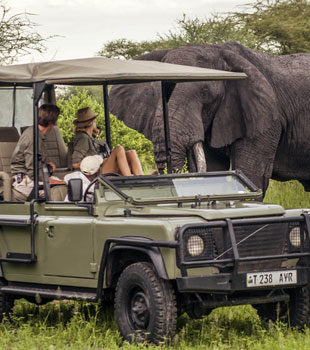

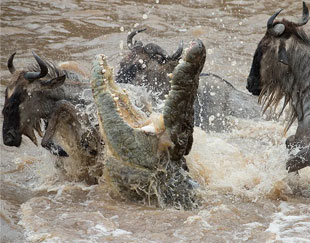

All The Best Tours
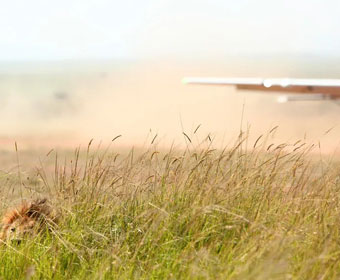
- Country : 1
- Locations : 5
- Duration : 8 days
- Accomodation : luxury
- Best Seasons : May, June, July
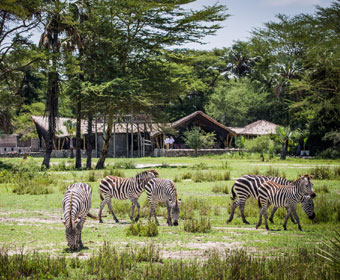
- Country : 1
- Locations : 7
- Duration : 9 days
- Accomodation : luxury
- Best Seasons : May, June, July
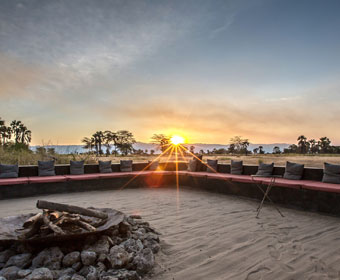
- Country : 1
- Locations : 4
- Duration : 8 days
- Accomodation : luxury
- Best Seasons : May, June, July
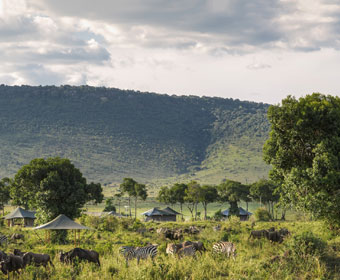
- Country : 1
- Locations : 5
- Duration : 8 days
- Accomodation : luxury
- Best Seasons : May, June, July

- Country : 1
- Locations : 5
- Duration : 8 days
- Accomodation : luxury
- Best Seasons : May, June, July
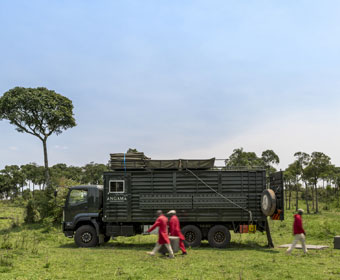
- Country : 2
- Locations : 10
- Duration : 8 days
- Accomodation : luxury
- Best Seasons : May, June, July
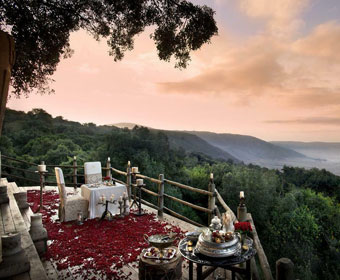
- Country : 3
- Locations : 9
- Duration : 8 days
- Accomodation : luxury
- Best Seasons : May, June, July
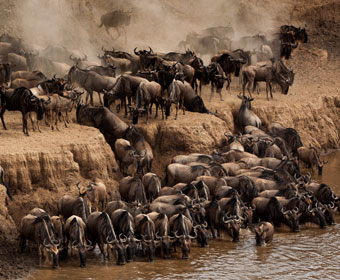
- Country : 1
- Locations : 5
- Duration : 8 days
- Accomodation : luxury
- Best Seasons : May, June, July
